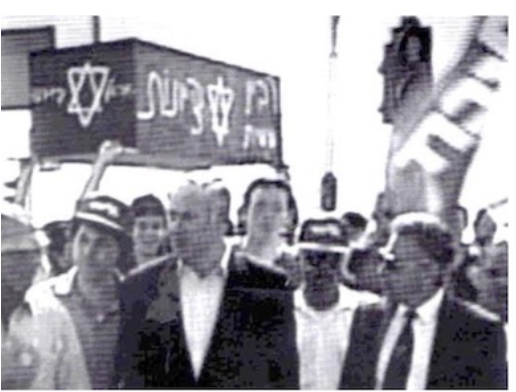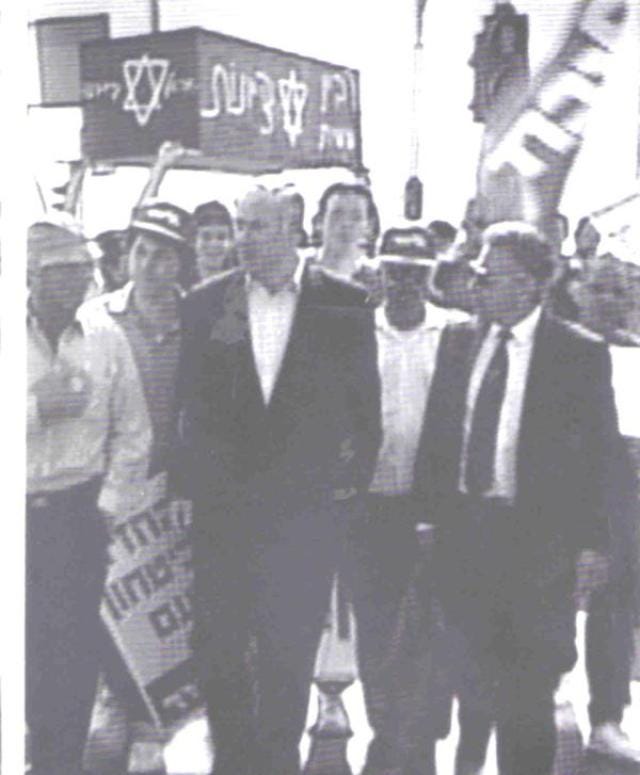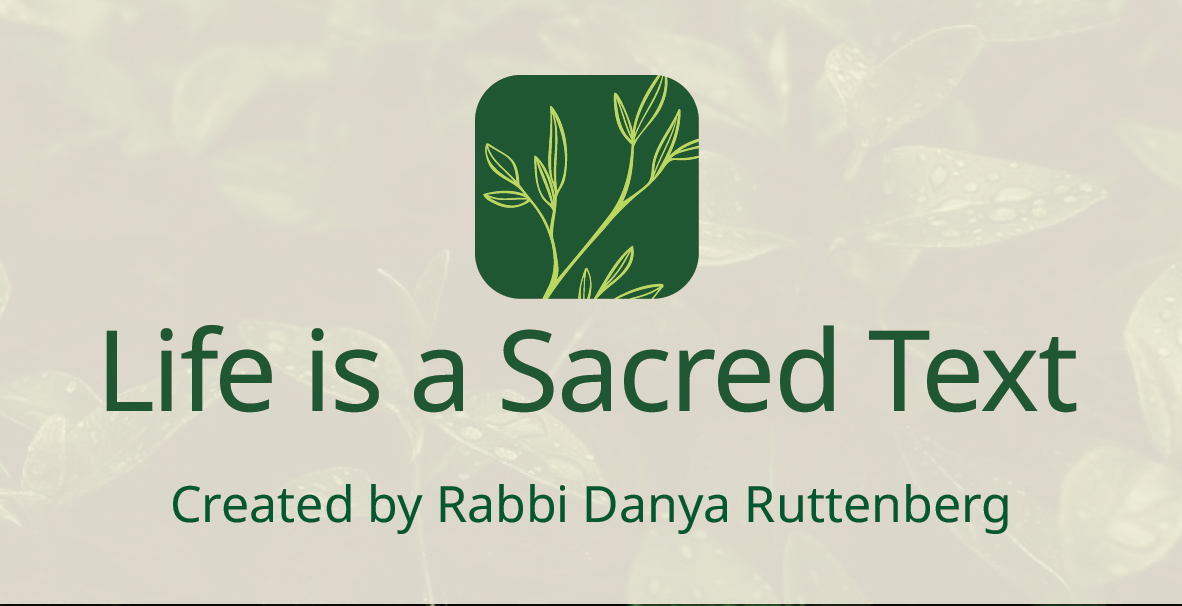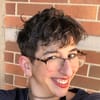a lot of things are true.
the refusal to grasp this is a non-trivial amount of the problem

This is Life as a Sacred Text, an expansive, loving, everybody-celebrating, nobody-diminished, justice-centered voyage into one of the world’s most ancient and holy books. More about the project here, and to subscribe, go here.🌱
These are my personal opinions, not those of my employer or of anyone else. They are also not the entirety of my personal opinions. There are a lot of other things I think that are not reflected here. I’m really tired right now, y’all. It’s been a lot these last many long days. I’m sure everybody’s gonna be angry that I’m not representing something fairly or clearly enough. Please do not yell. This is important and so much is at stake here, and so many of us are carrying so, so much love and care and also trauma into this conversation—processed or not, epigenetic or not. We are all trying our best to try to feel our way towards a more whole world: One that honors all of our inherent dignity. One that has enough for everyone, is safe for everyone, gives care to everyone. We are all doing our best. I am certain that I missed the mark somewhere. These are not the Twenty Commandments, they are some things to consider as put forth by one person. It’s ok to disagree with me or each other. But please, let’s stay respectful in the comments. If that’s not what happens I will turn them off for this round and re-open on a less charged topic. Anyway. Today, this is what I’ve got. (Reminder that if it’s bold, it’s probably a hyperlink.)
There is no justification for the mass murder of innocents. There is no justification for bombing a dance festival. For kidnapping elders. Children. Peace activists. Gunning down families. Burning houses with people alive in them1. For posting the murder of a grandmother on her own Facebook profile for her grandchildren to see it. Hamas’ attack was a war crime. Murdering Jewish children is not fighting for human rights2. War crimes are not the path to liberation.
There is also no justification for blowing up buildings without warning. For bombing hospitals. the bombing of children. For illegal blockades that turn tiny strips of land into open-air prisons. For unlawful killings; forced displacement; house demolitions and land theft; abusing children in detention; restrictions on movement; dehumanization and collective punishment, over 55 years of Occupation, and so much more.
Netanyahu and his ultra far-right government is not the Israeli people (though, yes, the Occupation has been going since ‘67, and that’s ultimately a collective choice.)3
4b. Netanyahu is the Prime Minister of Israel. Which is a country. He is not Prime Minister of the Jewish People. He technically represents the Israeli people (Trump, you may recall, technically represented the American people, but many of us felt some kind of way about that) but he in no way represents Jews from other points around the world. Diaspora Jews may have strong personal ties to a country that might be halfway around the world from them—or they may not at all.
Here are the words of Ahmed Al-Jaafari, the Palestinian chairman of the Parents Circle - Families Forum, an organization of Israelis and Palestinians who have lost family members as a result of the ongoing conflict (also known as the Bereaved Families Forum for Peace): “Very dear friends. We are all in shock and confusion. The Palestinian members of the Families Forum worry about your safety, join in the terrible mourning of the Israeli people and grieve for all the dead, injured and kidnapped. We Palestinians are each shut up in our own towns. We are not allowed to leave our towns. We are very afraid of the future and horrible scenarios that may develop. All of us, Israelis and Palestinians, pray that the damn war will end soon, that fighting and violence will not start elsewhere, and that the killing of innocents on both sides will stop. Despite the great crisis, we are still determined in our belief that only an agreement and a political solution will bring an end to the wars, the suffering, the blood, the dead, the wounded, the kidnapped, the captives and the imprisoned. Take care of yourselves and we will continue to strengthen each other.”
Israeli Hagit Ofran of Peace Now writes, (well, this, as I’m assuming is the above, is a translation:) “Please tell me, how does the bombing and starvation of two million Palestinians in Gaza contribute to our security? And does it help us recover and come back to life after the terrible massacre we went through? And will it return any of the prisoners? Really, we bombed them and put a heavy siege on them for so many years and so many times - how does this contribute to security? Enough. Since Black Sabbath we have already killed enough Gaza residents, we have shown them that we are stronger and that we can hurt them too. Very. Enough. What we need is quiet. A weigh in. Start picking up the fragments. Revenge does not help.”
Rev. William Barber writes, about the Hamas attack on Shmini Atzeret (the massacre on Oct 7th):
“Some say, in a moment like this, you cannot condemn the violence without also mentioning the violence that precipitated it. I will not agree to that position. I cannot. On one side of my own family, I come from formerly enslaved people who chose never to issue violence against the women and children of those who happened to be white, or even against those who held people in bondage. They chose to fight in the American civil war, soldier v soldier; and they believed in the right of self-defense …We are not talking about slaves versus slave masters in Israel today, but I know from my own context that an unequivocal “no” to the actors within Hamas who chose to commit these heinous acts does not dismiss history and the oppression of Palestinian people when they have been beaten and harmed by the actions of some – not all – in Israel. Nor does it dismiss a moral critique of Benjamin Netanyahu and others who have enacted harmful policies. In this moment, however, we must be clear that terrorism is not a protest against injustice, but rather an act of despair that creates more suffering for everyone.”
[You may note in the comments that there was an earlier analogy trying to explain why what Hamas did was mass murder and not liberation and I am grateful to the people who noted that the vehicle for this explanation—not mine, but I made the choice to share—was suboptimal. Listening, learning, trying to learn how to do better—always. Succeeding? Sometimes.]
Since people sometimes ask, “Well, where are the Palestinian MLKs? Where’s the Palestinian Gandhi?” They’re in Israeli jail. When residents of a town, like Bil’in, try to protest nonviolently—as they have every Friday for years—the residents of the town are teargassed, jailed, put under curfew. Issa Amro, a prominent activist committed to nonviolence and civil disobedience, has been detained and arrested many, many times by Israeli authorities for doing things as legally nothingburger as filming soldiers threatening demonstrators and giving tours of Hebron. Same story with Abdullah Abu Rahma—to get a sense of the ridiculousness, he’s been charged with “arms possession” for collecting empty M16 cartridges and empty sound bomb canisters—left over from Israeli soldiers’ detonating them to disperse demonstrators—for exhibition in a West Bank museum. And then of course there are also joint Israeli-Palestinian nonviolence projects like Combatants for Peace, helmed by Sulaiman Khatib,4 and many others (like Standing Together/Omdim B’Yachad, Women Wage Peace, Hand in Hand School5, all your faves, etc.)6
The First Intifada was primarily nonviolent, and led by women. (If your image of the “violent” First Intifada is of a Palestinian child throwing a stone at an Israeli tank, you may need to check your racism.) (Yes, there was some actual violence, but this first uprising was largely mass boycotts, civil disobedience, Palestinians refusing to work jobs in Israel, etc.—and the creation of health clinics, underground schools, and more) (The Israeli response was disproportionate, killing over 1,000 and injuring more than 130,000.)
There are many things that could have happened to have prevented this moment. Israel’s ending the over 55-year Occupation at many points along the way would have been a great start. Another key factor contributing to this moment is Netanyahu’s choice to prop up Hamas, including allowing cash to be funneled from Qatar—evidently part of his plan to prevent the creation of a Palestinian state by weakening the more moderate, diplomacy-minded Palestinian Authority.
Israel’s Prime Minister Yizchak Rabin and the Palestinian Liberation Organization (PLO)’s Chairman (and later President and Prime Minister of the Palestinian National Authority) Yasser Arafat had signed peace agreements in 1993 and then 1995, putting the process of Palestinian self-determination on track. Netanyahu spent July of 1995 rallying Israelis against the Oslo Peace Accords—manipulating through disinformation and inciting anger, violence, and fear. He even paraded around with a coffin bearing the words “Rabin” and “Zionism.” Rabin was murdered by right-wing Jewish extremist Yigal Amir in November, 1995, at a peace rally.7 The peace process never recovered—both Hamas’ terror attacks and Netanyahu’s election to Prime Minister in 1996 made sure of that.
Terrorist attacks—by Hamas, but also several other terrorist factions—began ramping up in the 90’s, as the peace process moved along. Bus bombings and other suicide bombings began to pick up speed and frequency between ‘94 and ‘96, ‘98—suicide bombings in busy shopping areas, near the Central Bus Station, at the main food market in Jerusalem, etc. And then the Second Intifada broke out. There were 138 suicide attacks and 1,038 Israelis killed from September 28, 2000 through February 8, 2005. And again, this is not a defense of Occupation (nor obviously a defense of terrorism—I will defend neither and condemn both) but I will note that Israelis carry trauma from losing loved ones in such horrific ways, and over a decade of not knowing if they or their loved ones would be blown up when riding the bus or going to a cafe or going to the mall—and constantly hearing of attacks, and the terror of trying to contact their people who might have been in the area—and making the calculation about whether they had to take the bus or could afford (time or money) to go another way, whether it was safer or less safe to sit by the windows of the cafe in case there was an attack, etc. Again, this does not justify immoral actions, but this pain, too, is real, and this trauma is real, and must be named and attended to.
It is also true that, during the Second Intifada, 3,189 Palestinians were killed, according to data of the Israeli human rights organization B’Tselem. In addition, 4,100 Palestinian homes were demolished and some 6,000 Palestinians arrested.
It is in both Netanyahu and Hamas’ interests for you to take extreme positions. The path to Palestinian freedom, and to peace and safety for everyone, requires seeing everyone’s humanity and rooting for everyone’s liberation. That’s the way out. That’s the only way through.

The guy in the black suit and white shirt with no tie, standing in the foreground but looks sort of like he’s also under the coffin is Netanyahu. [Rava said], What did you see to make you think that your blood is redder and more important than someone else’s? Perhaps the blood of that [other person] is redder. (Talmud Yoma 82b)
Yes, there are structural inequalities. Palestinians are not free or safe. Injustices must be rectified. Beginning with a telling of every truth.
Friends, remember, both Jews and Palestinians have existed on that land for thousands of years—it wasn’t all Jews before the Bar Kochba Revolt, and not all Jews left after the Bar Kochba Revolt. And the Jewish idea of returning to that patch of land started because Jews weren’t free or safe in Europe—it was expulsions, pogroms, Inquisitions, murders, and more that led to the yearning for a Jewish place in the first place, whatever the impact that has been. And the catalyst for the movement towards statehood was the Holocaust. Jews didn’t have anywhere else to go.
But that Jews weren’t safe and free doesn’t mean that we have a right to make another people unsafe and unfree. Trauma turtles all the way down. I know Jews are not safe now, and feeling less free this week than we have in some time. And.
We can refuse to root for the safety and lives and rights of human beings like they are sports teams.
In which there are winners and losers. In which safety is a finite resource that must be hoarded.
I don’t know what the way out is politically8, but I believe in finding the will, and in finding the way. If we choose to look for it, we can get there.
19. At the end of the day, everyone must be safe, free and allowed to flourish, because everyone is holy, created in the image of the divine.
Nobody’s children should be killed. Nobody’s.
- “Prayer of the Mothers”
By Rabbi Tamar Elad Appelbaum and Sheikha Ibtisam Mahamid Translated by Rabbi Amichai Lau-Lavie
God of Life
Who heals the broken hearted and binds up their wounds
May it be your will to hear the prayer of mothers.
For you did not create us to kill each other
Nor to live in fear, anger or hatred in your world
But rather you have created us so we can grant permission to one another
to sanctify Your name of Life, your name of Peace in this world.
For these things I weep, my eye, my eye runs down with water
For our children crying at nights,
For parents holding their children with despair and darkness in their hearts
For a gate that is closing and who will open it while day has not yet dawned.
And with my tears and prayers which I pray
And with the tears of all women who deeply feel the pain of these difficult days I raise my hands to you
please God have mercy on us
Hear our voice that we shall not despair
That we shall see life in each other,
That we shall have mercy for each other,
That we shall have pity on each other,
That we shall hope for each other
And we shall write our lives in the book of Life
For your sake God of Life
Let us choose Life.
For you are Peace, your world is Peace and all that is yours is Peace
And so shall be your will and let us say Amen.
I know people to whom this happened personally. Thank God they got out. Not everyone did. ↩
Listen, I’m not even talking about some of the more extreme reports I’ve heard. The kids of a personal contact will eventually, when school resumes, wind up going back to a classroom that’s half empty because a lot of the kids were killed by Hamas past weekend. ↩
And yes, we can and must talk about Nakba also, please I’m so tired, not now. ↩
I’ve had the honor of meeting him a few times and beyond what he mentions in this podcast, he talks about his time in Israeli prison—where he was incarcerated as a young teen—as a time of deep political education. His fellow prisoners introduced him to Gandhi, Martin Luther King, Nelson Mandela, Che Guevara—as well as to hunger strikes and other forms of nonviolent protest. But prisoner hunger strikes didn’t end the Occupation, is the problem. Nonviolent resistance hasn’t moved the needle in the ways that it should have. ↩
We sent our kids here—a joint Israeli/Arab, Hebrew/Arabic instruction school (there is a network of them) when we were in Jerusalem in 2015/2016. They do really extraordinary work (even though it is not perfect—its problems are really the structural problems with Israeli society that privilege Jews and disadvantage Arab kids—the school is full of committed faculty and staff who mean it, and they graduate kids who are committed to coexistence because they’ve been living it.) Eg beyond things like having Israeli and Arab teachers in every class and everyone learning all the languages and singing all the songs and celebrating Hanukah and Eid, all kids learn about the Nakba and color in keys (the symbol of Palestinian longing to return to the houses now part of the State of Israel) and it’s not shared in a way meant to threaten Jewish kids—just to tell another part of the story. They have a Jewish Memorial Day ceremony in one room and a Palestinian Nakba ceremony in another room, and anybody is welcome to be in either space. The holding of multiple narratives as truth. From age 3 through high school. ↩
An anecdotal observation: The joint Israeli-Arab projects seem to—and someone check me if I’m wrong—attract much less negative attention from state powers than Palestinians protesting nonviolently by themselves. Or, say, than Breaking the Silence, which is an organization of IDF veterans who tell the truth about what happens under Occupation. Netanyahu hates them. Tried to ban them and everything. ↩
Did settlements and access roads for settlers continue getting built under Rabin? Yes. Was he also building a pathway to Palestinian statehood and evidently (??) thought that evacuating settlements was a problem to solve for later? It seems also yes? Or possibly he was trying to appease other factions in his government? Or was building up settlements to establish them more solidly in anticipation of trading them for other land to Palestinians later? Or d) none of the above? But the building and the pathway definitely both happened, whatever the motivation. There are no facile narratives. ↩
Is there any hope still for the two state solution?. Should we consider a confederation system? Could a one-state solution work out? Are there other options? I don’t know. But human rights for everyone is a non-negotiable. ↩

